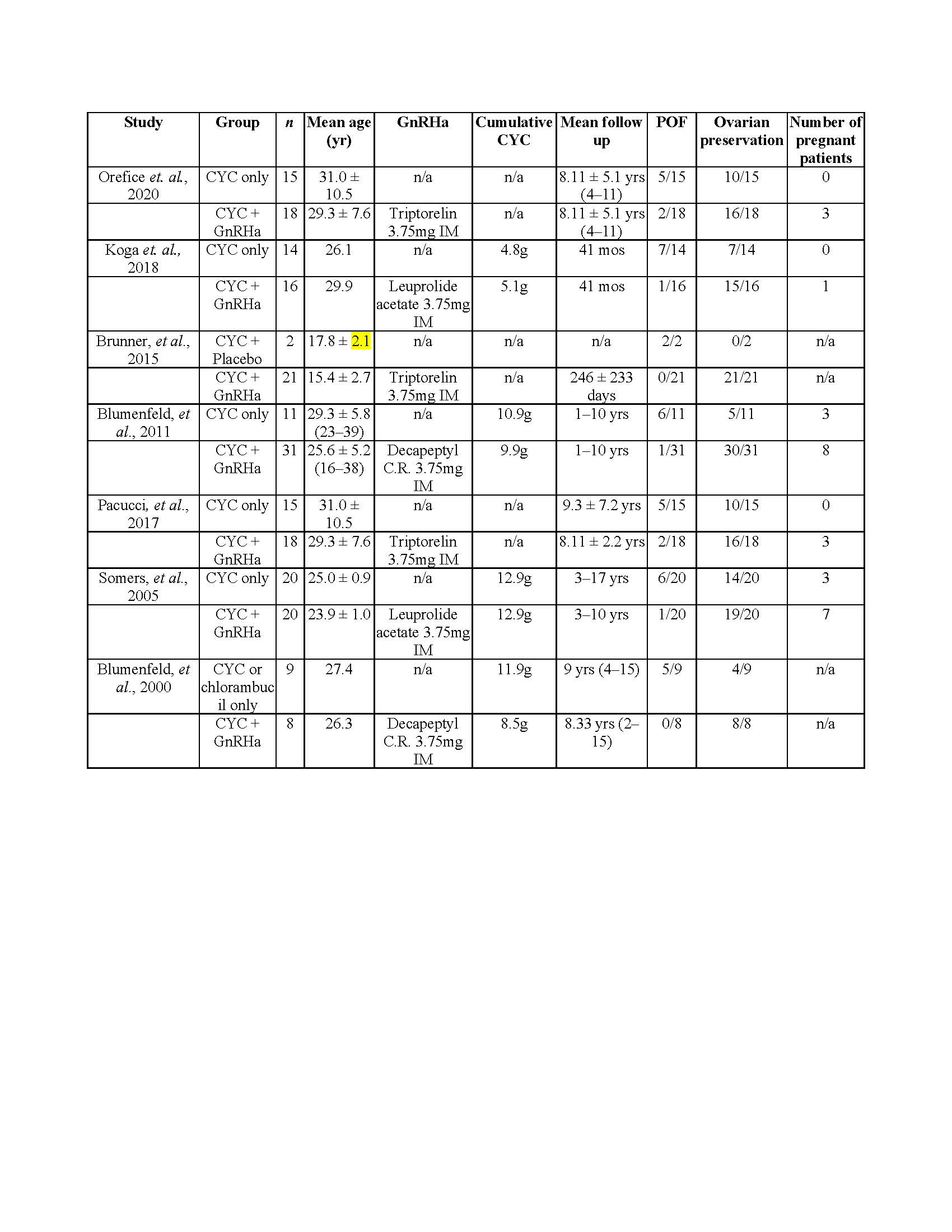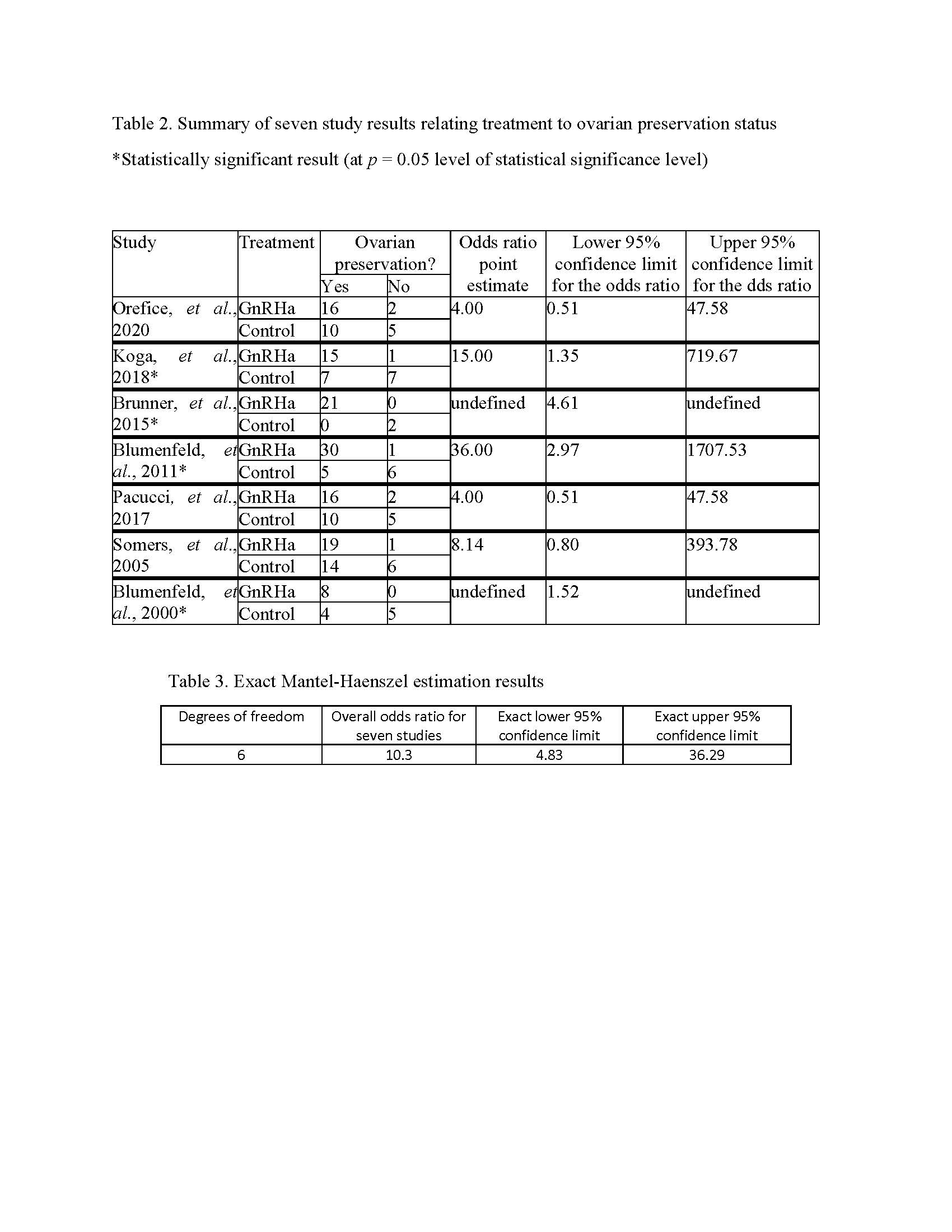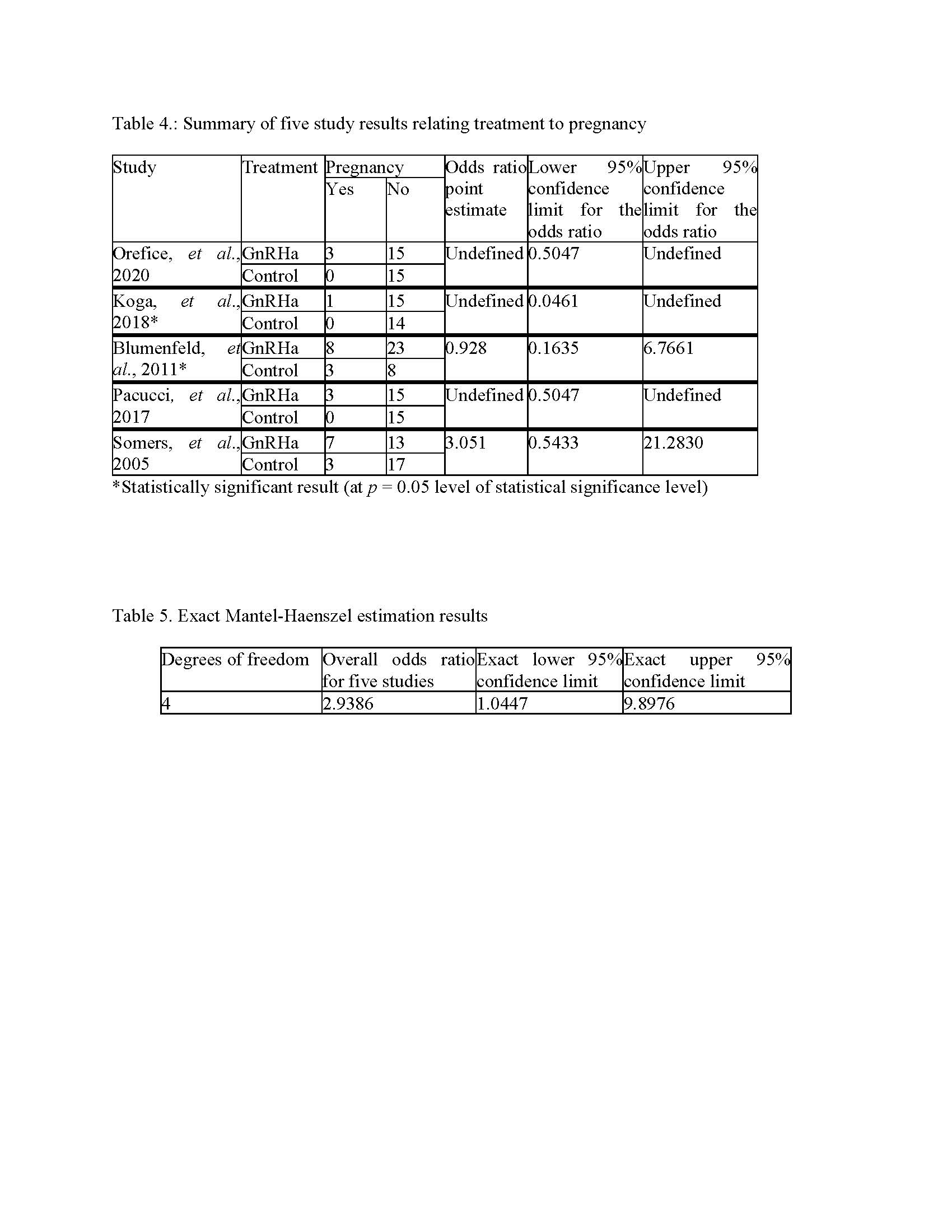Back
Poster Session B
Reproductive health
Session: (0939–0969) Reproductive Issues in Rheumatic Disorders Poster
0969: Use of Gonadotropin-releasing Hormone Agonists for Ovarian Preservation in Patients Receiving Cyclophosphamide for Systemic Lupus Erythematosus: A Meta-analysis
Sunday, November 13, 2022
9:00 AM – 10:30 AM Eastern Time
Location: Virtual Poster Hall
- KE
Komal Ejaz, MD
Cleveland Clinic
Cleveland, OH, United States
Abstract Poster Presenter(s)
Komal Ejaz1, Dania Abid2, Paul Juneau3, Jun Chu4 and Sarfaraz Hasni5, 1The Wright Center for Graduate Medical Education, Scranton, PA, 2Idaho College of Osteopathic Medicine, Meridian, ID, 3National Institutes of Health Library, Bethesda, MD, 4National Institutes of Arthritis and Musculoskeletal and Skin Diseases (NIAMS), National Institutes of Health (NIH), Bethesda, MD, 5National Institutes of Health, Bethesda, MD
Background/Purpose: Cyclophosphamide (CYC) has known cytotoxic effects on ovarian reserve and has been linked to premature ovarian failure in systemic lupus erythematosus (SLE). The concurrent use of gonadotropin-releasing hormone agonists (GnRHa) is postulated to preserve ovarian function by reducing the number of follicles exposed to CYC, but there is paucity of data to establish its efficacy. We conducted a meta-analysis to summarize the effect of concurrent GnRHa use in persevering ovarian function and pregnancy.
Methods: English language databases of PubMed, Embase and Cochrane were searched to include studies published between 2000–2021. Studies in females with rheumatic diseases receiving concurrent GnRHa and CYC therapy to evaluate ovarian preservation as defined by amenorrhea, follicle stimulating hormone, anti-mullerian hormone, or estradiol levels or successful pregnancy were included (Table 1). We used a fixed effect, exact, Mantel-Haenszel approach to estimate the overall odds ratio (OR) and associated 95% confidence intervals (95% CI) (Table 3).
Results: Seven studies with 218 female patients were included. The ovarian function was preserved in 125/132 (94.6%) of women who received GnRHa concurrently with CYC compared to 50/86 (58%) of women who did not receive GnRHa (OR = 10.3, CI = 4.83–36.29) (Table 2). The OR for pregnancy with GnRHa use =2.94 (CI = 1.04–9.89) (Table 4, Table 5).
Conclusion: Our results based on limited published studies suggest that concurrent GnRHa use preserves ovarian function and increase odds of pregnancy. It can be considered for premenopausal SLE females receiving CYC. Long-term follow-up studies are needed to establish the efficacy and safety of GnRHa use for ovarian preservation.
 Table 1. Summary of patient characteristics and POF incidence of eight studies regarding the efficacy of GnRH agonists
Table 1. Summary of patient characteristics and POF incidence of eight studies regarding the efficacy of GnRH agonists
GnRHa = Gonadotrophin-releasing hormone agonist; CYC = cyclophosphamide; IM = intramuscular; SC = subcutaneous; POF = premature ovarian failure.
 Table 2. Summary of sever study results relating treatment to ovarian preservation status
Table 2. Summary of sever study results relating treatment to ovarian preservation status
Table 3. Exact Mantel-Haenszel estimation results
 Table 4. Summary of five study results relating treatment to pregnancy
Table 4. Summary of five study results relating treatment to pregnancy
Table 5. Exact Mantel-Haenszel estimation results
Disclosures: K. Ejaz, None; D. Abid, None; P. Juneau, None; J. Chu, None; S. Hasni, None.
Background/Purpose: Cyclophosphamide (CYC) has known cytotoxic effects on ovarian reserve and has been linked to premature ovarian failure in systemic lupus erythematosus (SLE). The concurrent use of gonadotropin-releasing hormone agonists (GnRHa) is postulated to preserve ovarian function by reducing the number of follicles exposed to CYC, but there is paucity of data to establish its efficacy. We conducted a meta-analysis to summarize the effect of concurrent GnRHa use in persevering ovarian function and pregnancy.
Methods: English language databases of PubMed, Embase and Cochrane were searched to include studies published between 2000–2021. Studies in females with rheumatic diseases receiving concurrent GnRHa and CYC therapy to evaluate ovarian preservation as defined by amenorrhea, follicle stimulating hormone, anti-mullerian hormone, or estradiol levels or successful pregnancy were included (Table 1). We used a fixed effect, exact, Mantel-Haenszel approach to estimate the overall odds ratio (OR) and associated 95% confidence intervals (95% CI) (Table 3).
Results: Seven studies with 218 female patients were included. The ovarian function was preserved in 125/132 (94.6%) of women who received GnRHa concurrently with CYC compared to 50/86 (58%) of women who did not receive GnRHa (OR = 10.3, CI = 4.83–36.29) (Table 2). The OR for pregnancy with GnRHa use =2.94 (CI = 1.04–9.89) (Table 4, Table 5).
Conclusion: Our results based on limited published studies suggest that concurrent GnRHa use preserves ovarian function and increase odds of pregnancy. It can be considered for premenopausal SLE females receiving CYC. Long-term follow-up studies are needed to establish the efficacy and safety of GnRHa use for ovarian preservation.
 Table 1. Summary of patient characteristics and POF incidence of eight studies regarding the efficacy of GnRH agonists
Table 1. Summary of patient characteristics and POF incidence of eight studies regarding the efficacy of GnRH agonistsGnRHa = Gonadotrophin-releasing hormone agonist; CYC = cyclophosphamide; IM = intramuscular; SC = subcutaneous; POF = premature ovarian failure.
 Table 2. Summary of sever study results relating treatment to ovarian preservation status
Table 2. Summary of sever study results relating treatment to ovarian preservation statusTable 3. Exact Mantel-Haenszel estimation results
 Table 4. Summary of five study results relating treatment to pregnancy
Table 4. Summary of five study results relating treatment to pregnancyTable 5. Exact Mantel-Haenszel estimation results
Disclosures: K. Ejaz, None; D. Abid, None; P. Juneau, None; J. Chu, None; S. Hasni, None.

